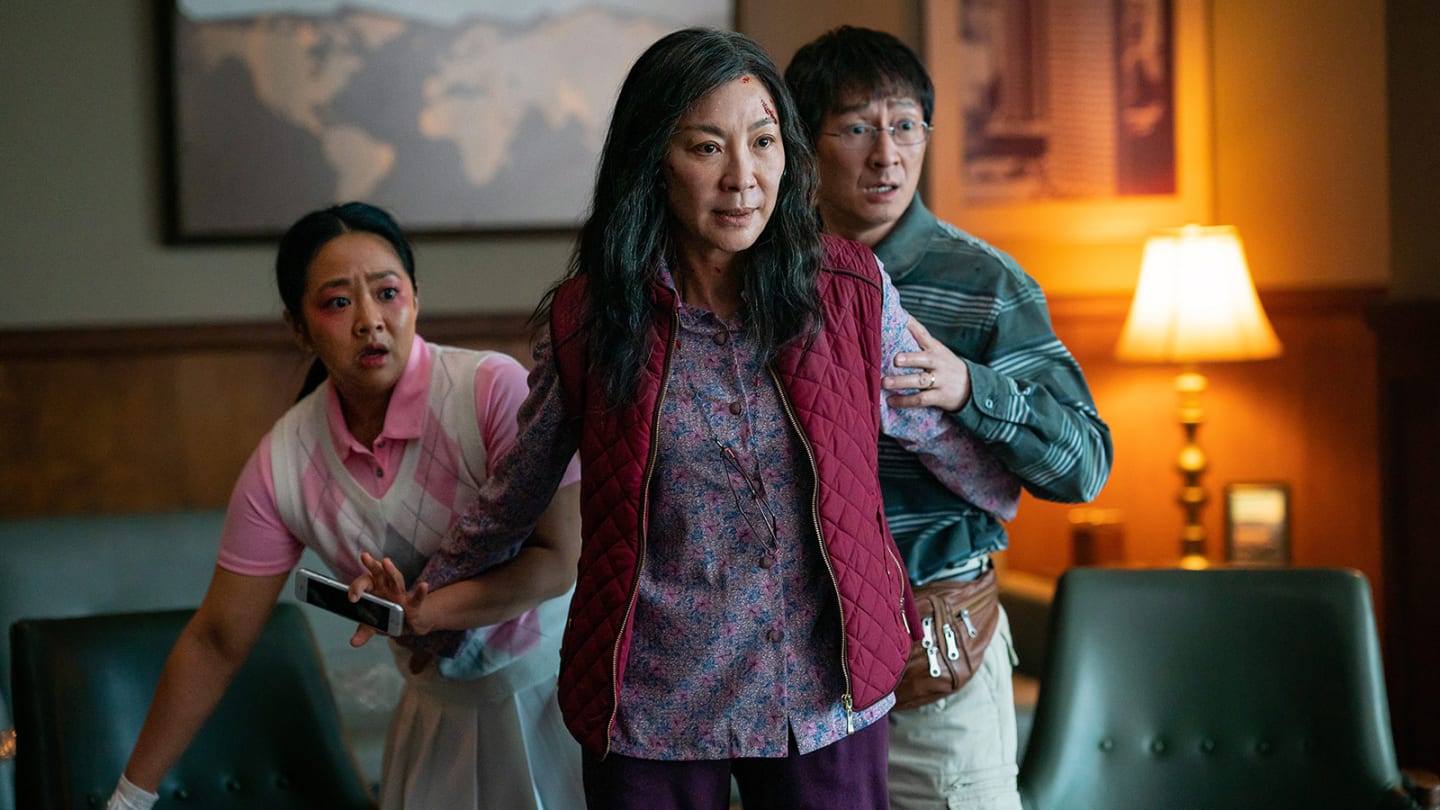With the award season fully underway and the 2023 Oscars arriving soon, ranking the Oscar best picture nominees is the best way to commemorate this year’s award show.
10. “Elvis”
The trite biopic is an example of sacrificing substance for style, offering an elementary glimpse at the rock ‘n’ roll icon. Director Baz Luhrmann has always been known to employ extravagant visuals and rapid-fire editing, but in a story that demands depth, some restraint was needed. Amid unwarranted runtime and indulgence lies Austin Butler’s stirring, committed performance.
9. “Avatar: The Way of the Water”
The science fiction epic boasts trailblazing VFX work and greatly expands upon the world its predecessor moored. While it makes the wise decision to pivot focus on the Sully children’s escapades, the writing feigns profundity and selfhood throughout. This is a spectacle championed by none, but it’s not hard to believe that the story was in service or second to the technology.
8. “All Quiet on the Western Front”
The German language retelling of the classic novel operates between the immersive storm of trench warfare and a drawl of an armistice race. The glaring shortcoming of this rendition is the discussions of the perils of blind nationalism and the importance of humanism that the novel and 1930 film included, respectively. The film seems more interested in depicting hell on earth, which it does with great technicality. But with its embellished style and score, it seems to revel in this inferno.
7. “The Fabelmans”
Steven Spielberg’s story about his youth and love for filmmaking will work for many but left some audiences feeling impartial. The amount of coming-of-age aspects the semi-autobiography attempts to touch is ultimately its handicap: these scenes are always sterile. Whether it is sugary or not, the underlying message about cinema and the unspoken interactions capture the implicit familial dynamic more gracefully than verbal exchanges.
6. “Triangle of Sadness”
The newest comedy satire from Ruben Ostlund has a promising start, jabbing at the gender roles and privilege of the relationship between two models. Unfortunately, as more characters are added to the melting pot, its social messages and nimble script lose serration. The film prospers when character dynamics are given room to breathe because Ostlund has an array of caricatures and a talented ensemble behind them. Although “Triangle of Sadness” flatlines as any form of satire, its bursts of meaningful character interactions and visual gags are entertaining.
5. “Women Talking”
A timely film, Sarah Polley’s drama adapts Miriam Toew’s book of the same name, following a Mennonite community, the sexual violence inflicted upon them and the irresolution that is left. Certain stretches fringe on artifice with Socratic formality, but the script is nonetheless confident from start to finish. Although a decision is reached, a sense of certitude and trajectory is not always capitalized — the discourse acts more like, and triumphs as, a think piece.
4. “Top Gun: Maverick”
“Maverick” pays homage to the original from its color grading, campiness and credits sequence, but outdoes Tony Scott’s film in every element. The respect for its predecessor also carries over to the audience; the legacy sequel is a crowd-pleaser. There is something for everyone whether it is the action, romance, bromance, zingers or high stakes. The dedication to camerawork and craft is prevalent, allowing these galvanizing action set pieces to take flight.
3. “The Banshees of Inisherin”
The tragicomedy about a fallout of two friends finds writer-director Martin McDonagh flexing his comedic and dramatic writing dexterity. The humor is crude as always, jokes can range from genitals, bread vans and donkey feces. But what begins as banter deftly shifts into misfortune. Much of this stated penmanship goes a long way thanks to Colin Farrell, who is both dopey and heartbreaking as the one grappling with his friend’s sudden behavior. On the verdant island, an increasingly weighty and memorable interplay unfolds.
2. “Everything Everywhere All at Once”
In simple terms, the film is an action adventure, familial drama, raunchy comedy and a science fiction trip. The brainchild of Daniels could be described as any of these and many more. The multiverse story juggles genres while never losing sight of the centerpiece: the Wang family through their highs and lows. Michelle Yeoh plays the matriarch, leading a faultless supporting cast. While it could not be more intimate, “Everything Everywhere All at Once” remains existentially profound. When all of the zaniness and discord resides, we are left with a sentiment akin to the phrase, amor fati, “love of one’s fate.” The film confronts head-on themes but never pretends to have all the answers to life’s what-ifs.
1. “Tár”
“Tár” is a masterfully crafted character deconstruction and delves into power dynamics made possible by Cate Blanchett in a career-high performance and a painstakingly restrained screenplay. Director Todd Field offers us a puzzle box of an individual, revealing information from the top down. Like its titular character’s image, the film leverages a deceptive facade, allowing nuances in conversation or corporal performance to be (over)analyzed. However there is practically no screen time that goes unjustified in “Tár’s” 2 hours and 37 minutes — even the credits are pertinent. Everything has a purpose to service Tár: her relationships, psyche and personality. Avoiding a definitive turning point, “Tár” takes the long road, following the maestro conductor down a complex descent from omnipotence.








